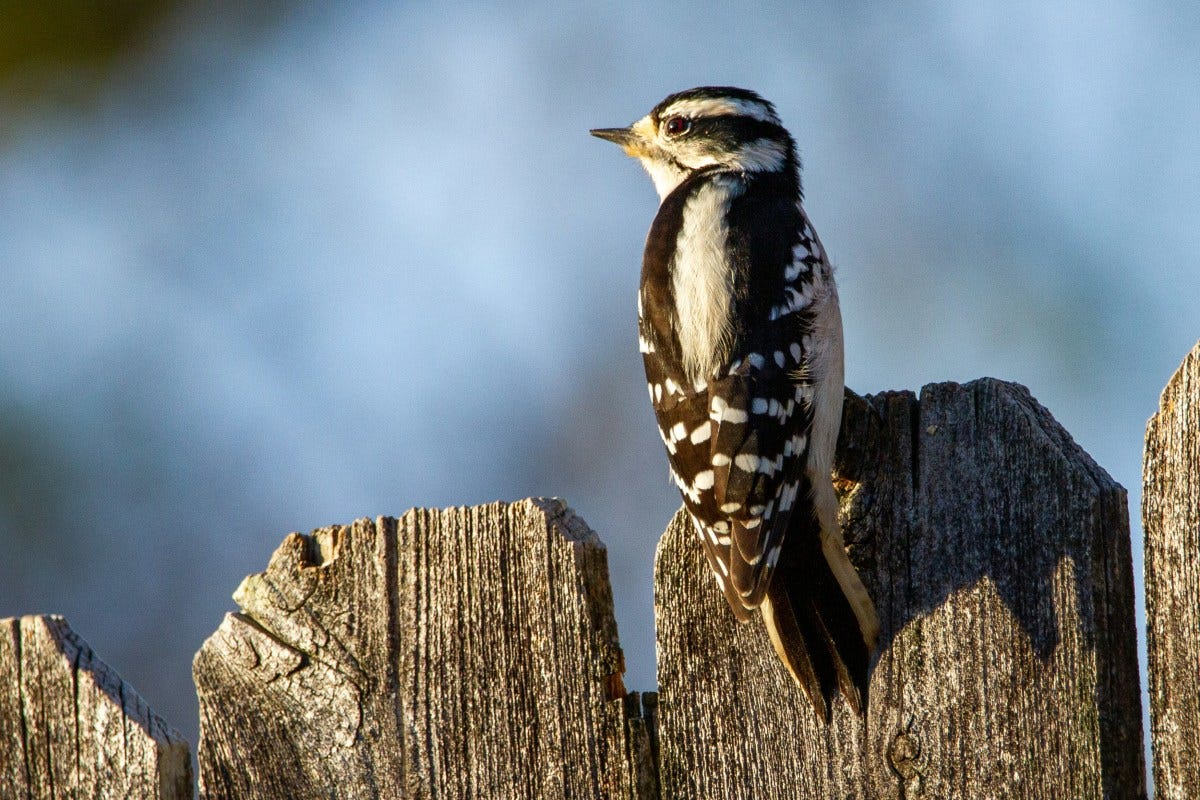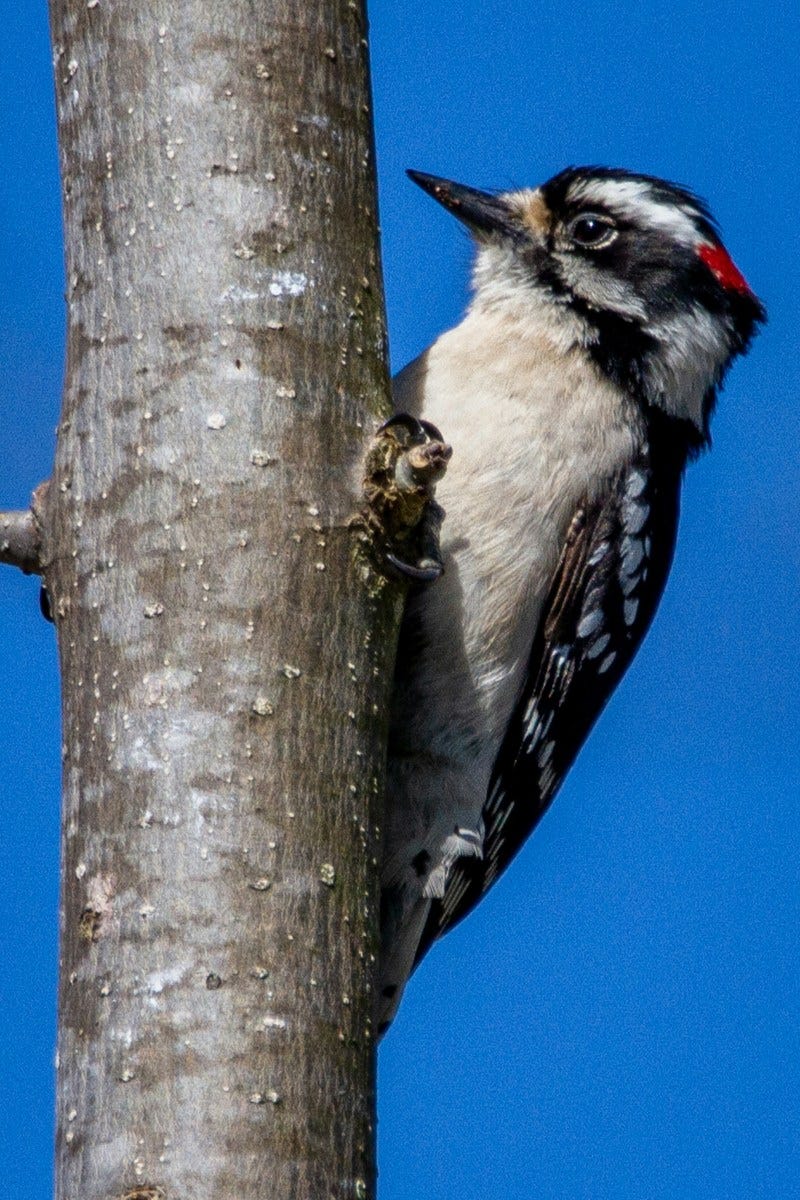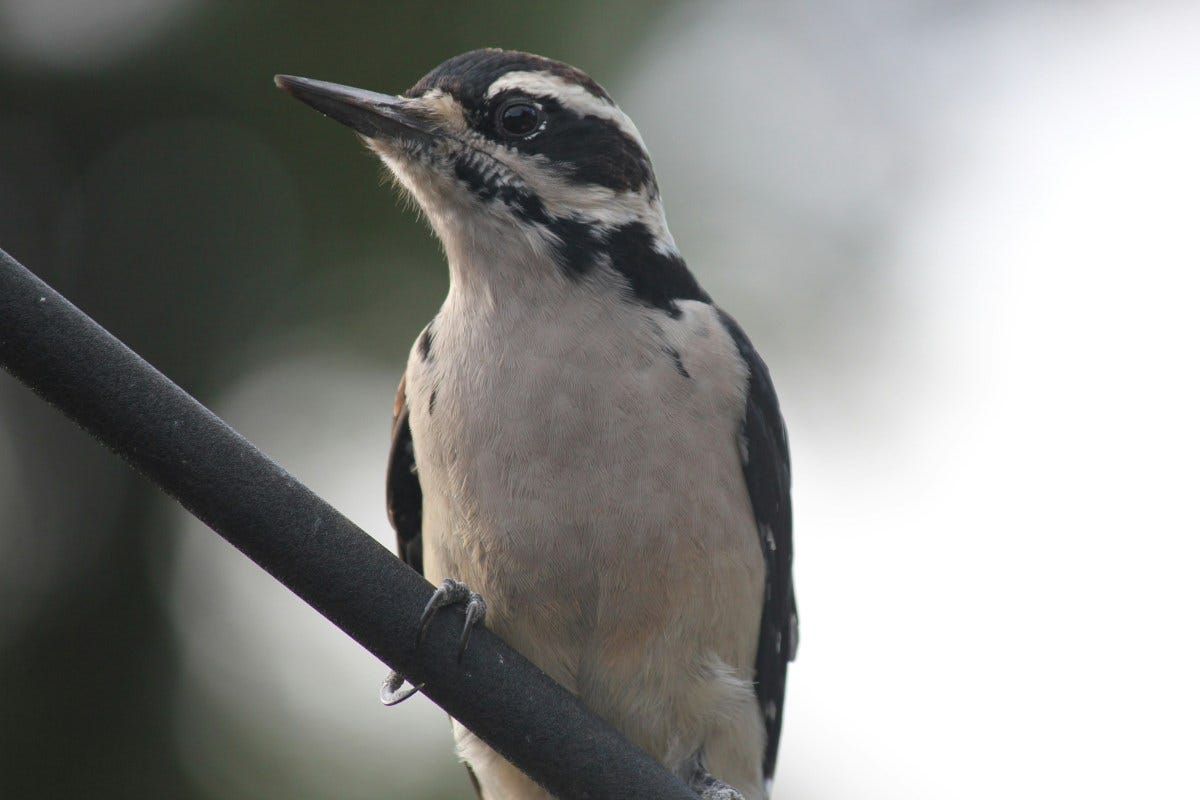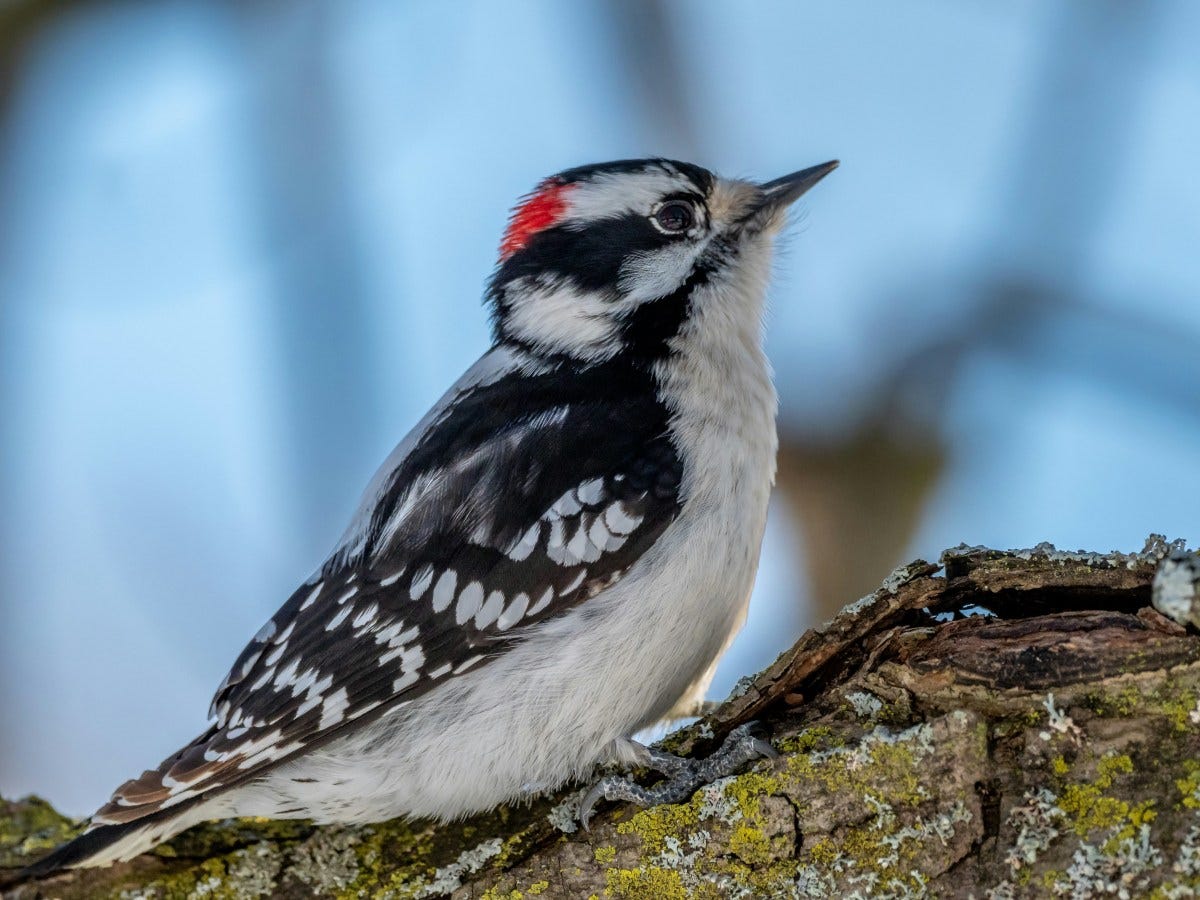A downy woodpecker | Photo by Joshua J. Cotten on Unsplash
Downy Woodpeckers
The earliest fossil evidence of woodpecker-like birds came in the form of a leg bone found in Germany, which dates back to roughly 25 million years ago (Oligocene Epoch). However, it has been theorized that they might have originally evolved as early as 45 million years ago.
Woodpeckers share a common ancestor with honeyguides—a group of birds most known for their ability to lead humans to beehives, in exchange for consuming the beeswax and larvae left behind.
Downy woodpeckers (Dryobates pubescens) are the smallest woodpeckers in North America and can be found throughout much of the United States and Canada, from deciduous forests to residential areas.
Their genus name derives from the Ancient Greek words dryós (“woodland”) and bátēs (“walker”). Conversely, pubescens is from the Latin for “pubescent” or “downy,” which echoes their common name and is a reference to the soft white feathers of their back stripe.
They are most closely related to species like the ladder-backed woodpecker (Dryobates scalaris) and Nuttall’s woodpecker (Dryobates nuttallii).
These woodpeckers are typically 5.5 to 7.1 inches long. They are black and white with a short bill; a red patch on the back of the male’s head is what differentiates him from the females.
Diet and Behavior
The downy woodpecker’s diet is primarily made up of insects, such as caterpillars, ants, beetles and their larvae. They’re the natural predators of known pests like elm bark beetles (who spread Dutch elm disease to trees) and European corn borers (a moth that is responsible for a great deal of crop losses every year).
Additionally, these small birds will happily eat seeds, peanuts and suet, and are a common visitor to backyard bird feeders.
Their diminutive size allows them to forage along thinner and lighter branches than a larger bird would be capable of. The downy's vocalizations include a sharp “pik!” sound, as well as whinny and rattle calls.
In terms of nesting locations, they favor wooded areas that are exposed to more sunlight, leading them to choose spots near forest clearings and in other open areas. They prefer trees with broader leaves for their nests, like birches, ashes, and poplars.
Their elaborate courting display, called a “butterfly flight,” sees the male and female pursuing one another in flight, with their wings held high and fluttering slowly in a manner that mimics the delicate movements of a butterfly.
While it is known that they’re monogamous birds who form pairs, sources vary on whether or not they mate for life. Like other woodpeckers, they drum to attract or communicate with a mate.
In the wild, their average lifespan is only 1-2 years, due to the high mortality rate of their young. However, the oldest known wild downy was a banded male who was at least 11 years and 11 months old.
The females lay eggs once a year and their clutch sizes can vary from 3-8 eggs. Male and female downy woodpeckers share the responsibility of incubating the eggs, taking turns keeping them warm. This process takes approximately 12 days.
Historical Observations
The downy “is perhaps not surpassed by any of its tribe in hardiness, industry, or vivacity,” wrote artist and ornithologist John James Audubon.
Writer and ornithologist Edward Howe Forbush also spoke admiringly of the species as a “model of patient industry and perseverance.”
Evolutionary Strategies
This species bears a striking resemblance to the larger hairy woodpecker—an example of convergent evolution, a process by which two species evolve to look alike, despite not being closely related.
One theory for the reasons behind this particular instance of convergent evolution is that it benefits the downy woodpecker to appear, at least at a glance, to be the larger and more formidable hairy woodpecker and allows them to compete more comfortably with bigger birds.
The downy doesn’t cache food, but has been known to follow birds who do—such as the white-breasted nuthatch—and grab seeds from their cache. Additionally, they will hang around with bigger birds, like pileated woodpeckers, to take advantage of their ability to make larger excavations, as well as the insects that they overlook while doing so.
Their natural predators include raptors such as the Cooper’s hawk, American kestrel, and the sharp-shinned hawk.
A Cheerful Sight at Feeders
If you live in the United States or Canada and ever feed birds or go out looking for them, then you’ve likely seen this adorable little woodpecker before, as it’s the most common species of woodpecker on this continent. They are frequent backyard visitors and mix in easily with a variety of other species of feeder birds.
(This article was originally published on HubPages)







